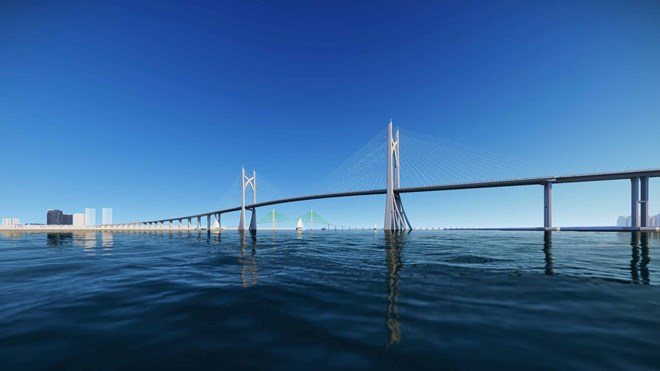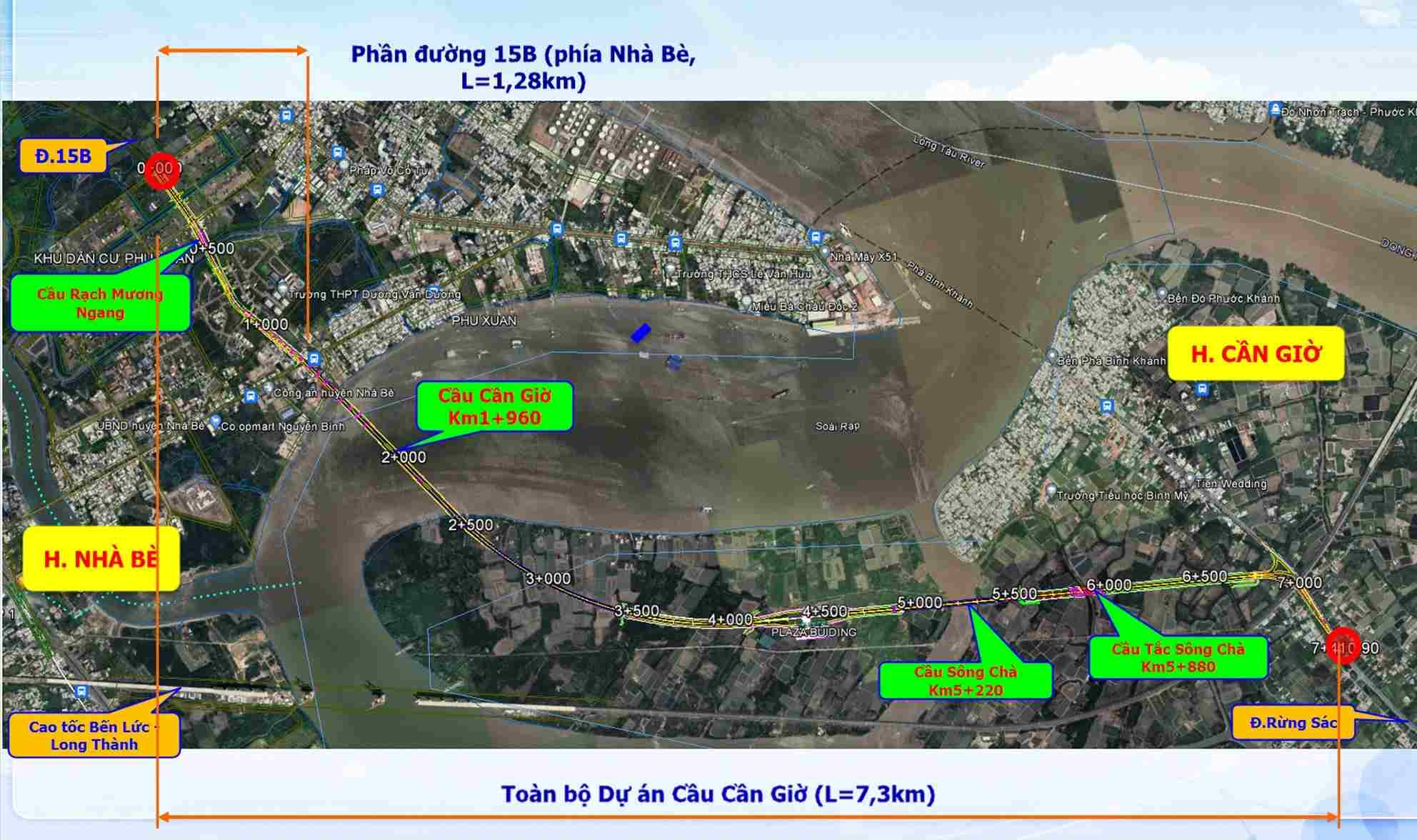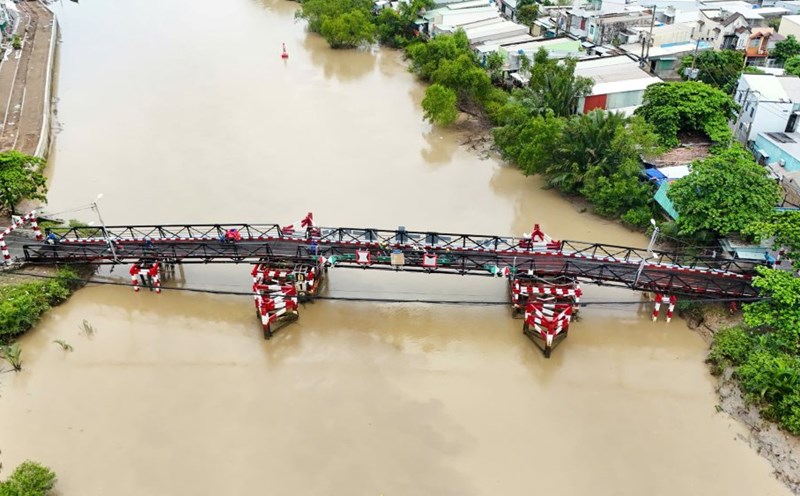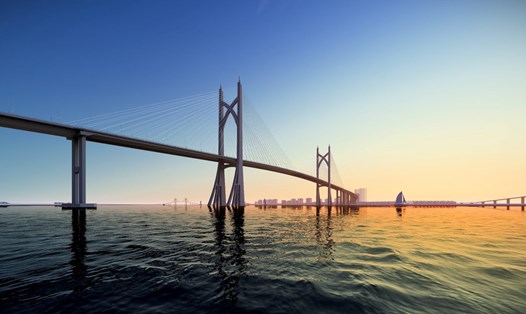Trung Nam Construction Investment Joint Stock Company (Trungnam Group) has just sent a document to the Ho Chi Minh City People's Committee, the Department of Finance and the Department of Construction, proposing to participate in the implementation of the Can Gio bridge project according to the provisions of Law No. 90/2025/QH15 of the National Assembly.
The Can Gio bridge project is about 7.3 km long, connecting the South of Ho Chi Minh City with Can Gio, replacing the current Binh Khanh ferry.
Currently, the project is proposed to be implemented under the BOT (build - operate - transfer) form with a total capital of about VND 10,569 billion.

According to Decision No. 1125/QD-TTg of the Prime Minister on approving the Project to adjust the general planning of Ho Chi Minh City to 2040, with a vision to 2060, Metro Line 12 (connecting the center of Ho Chi Minh City - Can Gio) has been updated into the city's urban traffic planning system.
This Metro line is expected to start construction in 2026, when put into operation, it is expected to fundamentally change the transportation structure of the area.
Trungnam Group believes that in this context, if investing in Can Gio bridge under the BOT form, it will reveal many shortcomings:
Limited ability to recover capital: Can Gio Bridge is the only route connecting the mainland with Can Gio area, the fee collection will affect the basic access of people.
Difficult financial plan: Current traffic volume is low, the payback period can last 30 - 50 years, making it difficult to attract investors.
Competitive impact of Metro No. 12: When the metro is in operation, the demand for travel by private means will decrease, directly affecting the bridge's toll revenue.
Therefore, this enterprise proposed that the Ho Chi Minh City People's Committee, the Department of Finance and the Department of Construction allow it to continue to participate in the implementation of the Pre-Feasibility Study Report of the Can Gio bridge project under the form of BT contract (build - transfer), belonging to the group of public-private partnership (PPP) contracts, according to Law No. 90/2025/QH15.
Law No. 90/2025/QH15, effective from July 1, 2025, amends and supplements a number of important laws, including allowing the re-application of BT contracts, creating conditions for mobilizing private resources for key transport infrastructure projects in Ho Chi Minh City.

The pre-feasibility study report for the Can Gio bridge project has been completed and submitted to the City Appraisal Council since December 2023. However, the project has not been able to submit to the Ho Chi Minh City People's Council for approval of the investment policy due to planning problems.
According to the Department of Construction, Ho Chi Minh City is implementing the Master Plan adjustment project until 2040, with a vision to 2060.
The Ho Chi Minh City People's Committee assigned relevant agencies and units to locally adjust 1/2000 scale zoning plans, specialized projects in technical infrastructure and urban transport related to complete the legal basis for appraisal and decision on investment policies for the Can Gio bridge project.
It is expected that Can Gio Bridge will complete the pre-feasibility study report and submit to the Ho Chi Minh City People's Council for approval of the investment policy in 2025.
According to the pre-feasibility study report, Can Gio Bridge is designed with 6 lanes (4 car lanes, 2 rudimentary lanes), operating speed of 60 km/h. The two- tower cable-stayed bridge, with a clearance of 55 m - the highest in Vietnam today, equivalent to Binh Khanh bridge (on the Ben Luc - Long Thanh expressway), is also the largest cable-stayed bridge in Ho Chi Minh City.
Can Gio Bridge will replace Binh Khanh ferry, shorten travel time between Can Gio and the center of Ho Chi Minh City, and open a new connecting route to the South.
The project also plays a key role in the development of two major projects in Can Gio: the 2,870-hectare coastal urban tourism area and the Can Gio International Transit Port.









